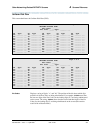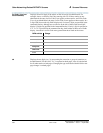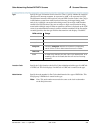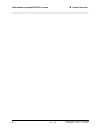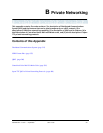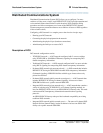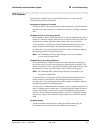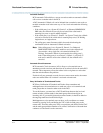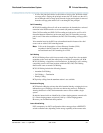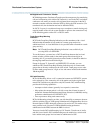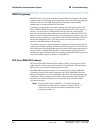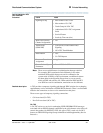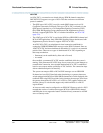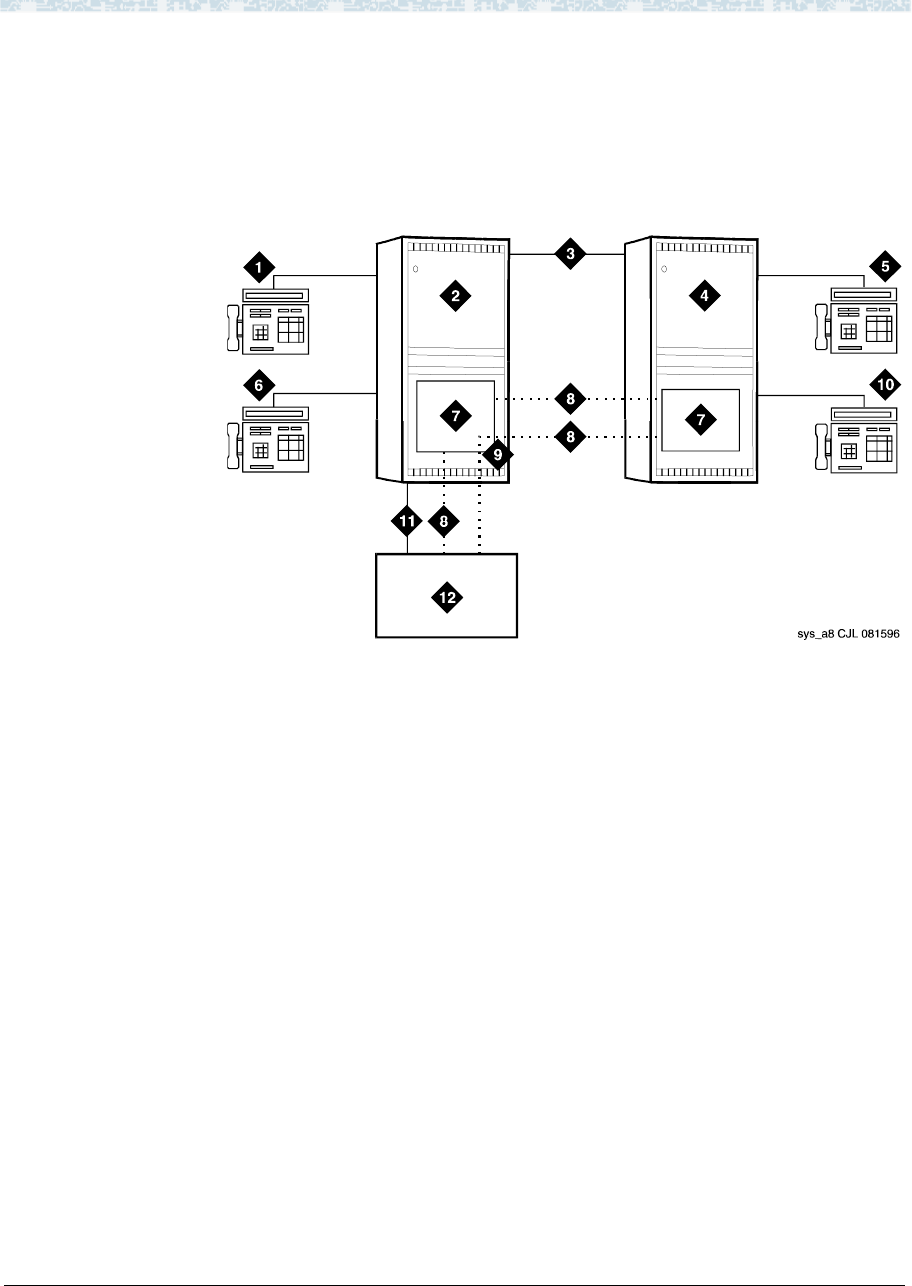
Distributed Communications System
315
Administration for Network Connectivity
555-233-504 — Issue 1 — April 2000 CID: 77730
B Private Networking
Call Coverage
DCS Call Coverage provides DCS messaging required for calls to be covered on
remote systems when there is a DCS signaling link (BX.25, PPP, or ISDN-PRI)
for the trunk groups. Calls to an extension on one system are covered by
extensions on remote systems that are administered as coverage points.
Figure 4 shows an example of DCS Call Coverage.
Figure 4. DCS Call Coverage
In Figure 4, calls to Station A can be covered first by Station B, then by Station C
or D, and finally by the AUDIX on system A. Alternatively, calls could be
covered by Station C, then Station B, then Station D, and so on.
If the called party answers after the call goes to coverage and the coverage point
has answered, then the called party, calling party, and coverage point are all
conferenced together.
If the called party answers and the coverage point has not answered, the call to the
coverage point drops and the called party connects to the calling party.
Exceptions to DCS Call Coverage
DCS Call Coverage is similar to Call Coverage, with the following exceptions:
~ Coverage Answer Groups across nodes are not supported.
~ Under the following error conditions, a call follows the coverage point’s
coverage path.
1. Station A
2. System A - DEFINITY ECS
3. DCS Tie Trunk Groups
4. System B - DEFINITY ECS
5. Station C
6. Station B
7. PGATE or PI Board
8. X.25 or ISDN PRI DCS Signaling
Link
9. Hop or ISDN TSC Gateway
10. Station D
11. AUDIX Voice Lines
12. AUDIX - x34000



